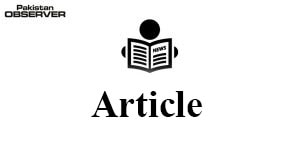Re-imagining indigeneity: From mountains to coast
WORLDWIDE, indigenous peoples are considered inheritors and practitioners of distinctive cultures and practices which they have retained and fortified in the face of foreign invasive modernization.
The distinct characteristics of such cultures are fading as such communities have been given little consideration in the intrusive rapid colonization in the past centuries.
To remediate that, the ILO Convention 1989 and the UN systems have been developed which are supposed to play a key role in recognizing the extraordinariness of these people and cultures.
Despite their status, these tools are not without faults.The ‘landmark’ 2007 UN Declaration on the Rights of Indigenous Peoples (UNDRIP) has essentially been labelled as fraught, and an attempt to further stabilize the state-centric international order.
The Declaration aims to identify, rather than define the indigenous people, given their diversity, through a set of modern interpretations of the aforesaid term.
But the holistic interpretation of ‘self-determination’ was consistently weakened by external forces during ratification.
“the right to autonomy or self-government in matters relating to their internal and local affairs” is itself a limiting statement, denoting that indigenous peoples are to be allowed only certain administrative authorities within their communities.
Moreover, Article 46(1) means that UNDRIP would not support any form of self-determination which are ‘external’ to previously established state structures.
It is unambiguous that the Anglo-settler states: Canada, Australia, New Zealand and the United States (CANZUS) – which were formed through a process of extreme colonial expansion – were very vocal against the indigenous peoples’ claim to sovereignty during the ratification of UNDRIP.
The reason is that the creation of these states was justified by labeling the existence of indigenous people as a ‘temporary’ condition, a ‘phase’ in human development; and that they would ‘civilize’ themselves with time.
Consequently, after repeated derogation, UNDRIP now enables states to bring indigenous cultures into the international state-centric framework of inclusion, which emphasizes on preserving the common at the expense of what makes communities unique.
Furthermore, UNDRIP poses indigenous peoples as secondary actors, a special interest, who, as feeble dependents, are supposed to be ‘managed’ by their respective states.
Therefore, UNDRIP must be considered as of little significance to indigenous communities in their effort to exist and effectively preserve and propagate their cultures against global homogeneity.
South Asia offers several examples which confirm the patterns utilized by the colonizers to isolate and eliminate the cultures which their binary Eurocentric mindsets could not comprehend.
A prime case is the infamous Criminal Tribes Act of 1871 which allowed the patriarchal British Raj to “govern” and perform “surveillance and control” of the Khawaja Sira communities, which did not fit their traditional gender binary and thus, were labelled as one of the “criminal tribes”.
It is evident that the colonizers perceived the Khawaja Siras (an umbrella term for transgenders, intersexuals, etc boasting a rich culture exclusive to the sub-continent region) as a challenge to the imperial rule; which instigated their extermination, and a subsequent loss of heritage of at least 2000 years.
History is filled with countless such cases of settlers’ defilement of native cultures. The charters and discourses such as UNDRIP, which have originated from various international forums have continued this legacy of diluting the local cultures in the name of globalization and ‘leaving no one behind’.
Pakistan is blessed with geographical diversity and has been a home to various communities boasting rich culture and traditions, from the mountains to the coast.
All these cultures have been preserving their practices for hundreds of years against warfare, climate variabilities, geopolitical and social turmoil.
Many such communities suffer because the international apparatuses such as UNDRIP, which inspire national level legislature, are a product of settler states’ attempt to contain indigenous peoples.
Under such prejudiced criteria (and the fact that most communities in Pakistan have had external influences being on the Silk Route), no community in Pakistan qualifies as ‘indigenous’ despite having profusely rich heritage.
As religious identities generally trump cultural recognition in Pakistan, all communities are labelled as such.
Ancient Kalashi community in the north is being subjected to forced conversions and rampant tourism; mechanized technology has put the fate of coastal fishing and boat-building communities’ culture in peril.
Along with the communities themselves, their valuable hereditary knowledge of dhow making, inherent ways to fare at sea through weather forecasting and navigation, along with climate response strategies are at the risk of being lost forever.
The international policy processes and their outcomes have been unfavourable to the integrity of the indigenous (and potentially indigenous) communities worldwide.
On national level, re-imagination of structures that disregard and immobilize culturally significant communities by labelling them only as minorities is mandatory.
There is a dire need to introduce frameworks which can acknowledge indigeneity of communities and cultures by offering less-strict, holistic, self-determination criteria, allowing them to claim their exclusive rights and standing in this increasingly globalizing world.
—The write is associated with National Institute of Maritime Affairs, views expressed are his own.










